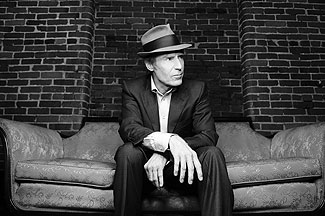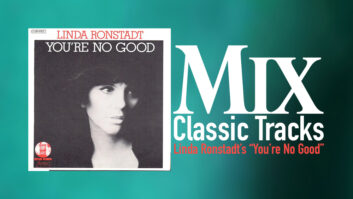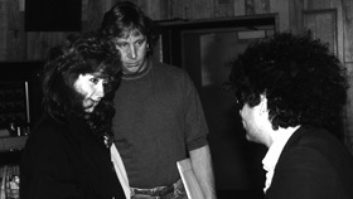
J. D. Souther’s If the World Was You is his first solo album in 25 years.
Well, this is unexpected. J.D Souther is best known for writing or co-writing songs in the ’70s and ’80s for the likes of The Eagles (“Best of My Love,” “New Kid in Town,” “Heartache Tonight”), Linda Ronstadt (“Don’t Cry Now,” “Faithless Love”), Bonnie Raitt (“Run Like a Thief”), James Taylor (“Her Town Too”) and others. A fine singer himself, he’s appeared on numerous albums and put out a handful of solo albums, the most successful of which was You’re Only Lonely (1979).
What makes his latest album — If the World Was You, his first in 25 years — such a wonderful surprise is that it’s one of the best jazz albums I’ve heard in many moons. Yes, it still features Souther’s smooth, sometimes plaintive, always expressive lead vocals, and (mostly) conventional song structures. But this is no “L.A. Mafia” country-rock romp. Rather, Souther has surrounded his voice and guitar with an amazing quintet that alternately sounds like a hot band in some smoky New Orleans jazz club in the ’40s, cool like some of Miles Davis’ classic groups, rhythmically driving like the Buena Vista Social Club and right at home on country-tinged ballads and blues. Saxophonist Jeff Coffin, trumpeter Rod McGaha and pianist Chris Walters have plenty of room to blow on the 11-song disc, and they’re ably supported by Dan Immel on stand-up bass and drummer Jim White. The album has a loose, live-in-the-studio feel — a far cry from Souther’s “perfect” L.A. records of yore — yet the band sounds like they’ve been playing together for years.
Souther has been living in Nashville for most of the past decade, but it was a visit to Cuba that seemed to push him toward making a new album. “That trip made a real impression on me,” says the one-time Amarillo, Texas, native. “I was a drummer when I was a kid and I loved Afro-Cuban music. And I’ve always loved jazz, as well, so this isn’t as much a stretch for me as it may seem.” He found the players for his album scouring Nashville’s jazz nightspots, and once he’d found his core five, they assembled in Souther’s barn to rehearse and then played a couple of gigs in a Nashville club called The Basement before going into the studio to record.
L.A.-based engineer Niko Bolas, a longtime friend of Souther’s, suggested the studio: “My friend George Massenburg had just built this great 5.1 mixing room at Blackbird [in Nashville], but the room itself sounded amazing, and Massenburg was going out of town, so I told J.D., ‘Look, if you really want to do something old school, we’ll go in there and empty the room and set it up for a tracking date.’ The console was a split ICON that was small enough that I could roll it against the wall and use it as a table; and the control section I used to run the Pro Tools rig. All the mic pre’s were in my road cases and I had them out by the door; we moved in a 9-foot Baldwin piano, and we cut it with the six of them standing in a circle, the same way they played in J.D.’s barn. I just used headphones, and then when we were done tracking we would turn up the speakers and we’d see what happened. It was basically trust your instincts and trust your VU meters.”
Because they were tracking completely live, including Souther’s lead vocals, miking was critical for the sessions. In addition to close-miking each of the acoustic instruments, Bolas also hung four Sanken CO-100K mics from the ceiling 12 to 14 feet above the musicians to capture the room sound and the vibe. Different songs required different miking schemes. For instance, sometimes Bolas relied mostly on three Sennheiser 421s as drum overheads; other times he miked the drums individually. For the horns, he mainly used Royer ribbon mics, but occasionally went with Neumann 47s. He used “either AKGs — maybe 452s — or Neumanns” on the piano, “but the real battle was vocals — we tried a [Neumann] 67, a Shure SM7, a [Shure] 58, a [Telefunken] 251; it depended on the song. On louder things you couldn’t get a very big microphone up there because of the leakage.”
Indeed, leakage was both friend and foe on this project. On the one hand, it lends the project a warmth and immediacy that is positively intoxicating. From a technical standpoint, though, it made fixes very difficult. Souther says, “One of the things that makes this record sound a little bit different is that nothing is isolated. You can feel guys moving together and musicians of that caliber have a unique ability to listen to each other. They don’t step on each other’s toes.”
Inspired by old George Jones and Miles Davis records Souther would play before sessions, the band found its sound in the room quickly and easily. “It was a blast,” Bolas says. “The fact that J.D. trusted us to go in — on his dime — and experiment in that room in that fashion was really cool.”



